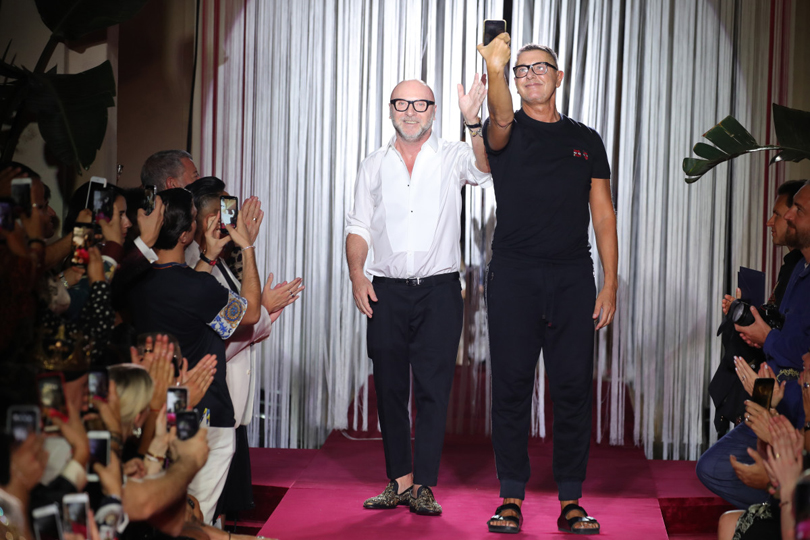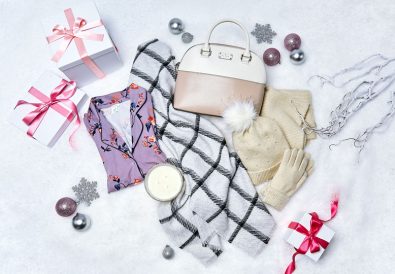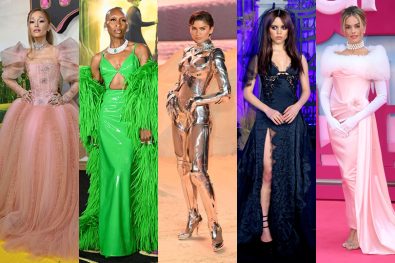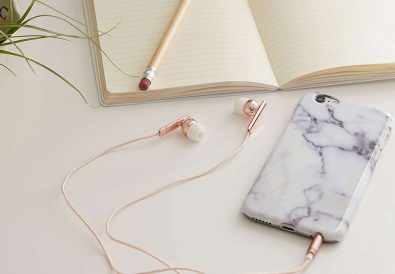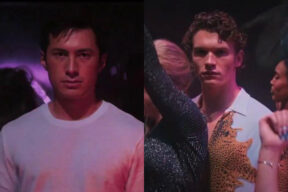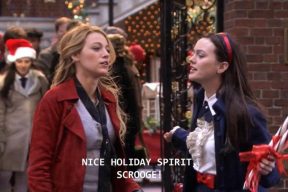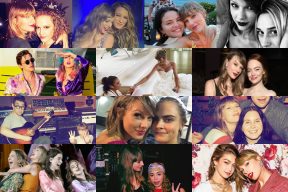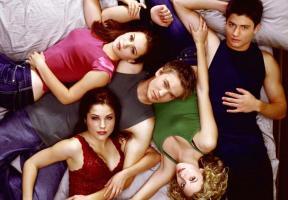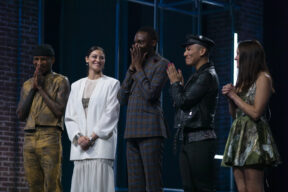A look back at Domenico Dolce and Stefano Gabbana (mostly Stefano Gabbana) being racist, homophobic and sexist…
On Wednesday, November 21, Dolce & Gabbana cancelled its much-hyped Shanghai fashion show, called The Great Show, amid controversy after critics on Chinese social media accused the brand of racism. The Shanghai extravaganza was supposed to be an hour-long tribute to China featuring over 300 looks, 140 performers, and 1,400 people in the audience.
The Great Show was ultimately cancelled after a promotional video was posted to the Chinese site Weibo, showing a Chinese woman attempting and failing to eat Italian food (pizza, a cannoli and spaghetti) using chopsticks with subtitles in Chinese. The ‘Eating with Chopsticks’ campaign instantly sparked controversy and drew condemnation from Chinese celebrities and social media, which prompted the brand to take the video down within 24 hours of it being posted. But, that didn’t stop it from circulating… Plus, the controversy was only beginning to brew.
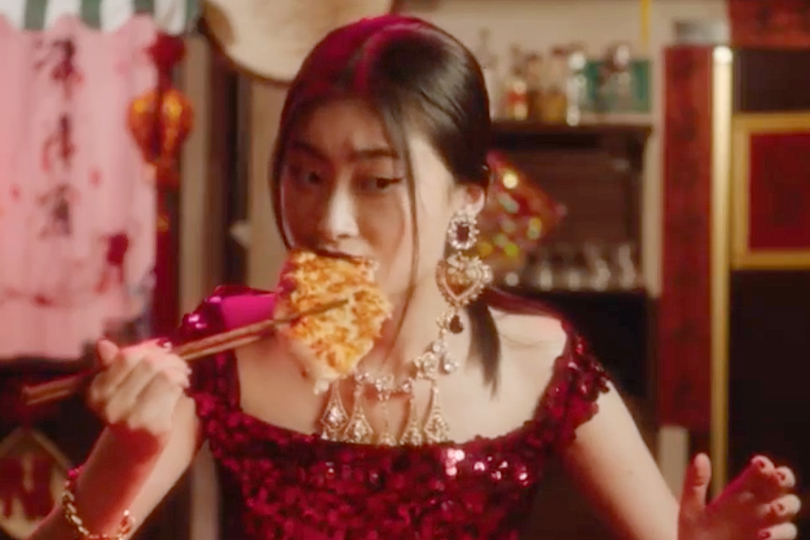
As the ‘Eating with Chopsticks’ ad circulated on social media and people became angered by what they considered the patronizing tone of the narrator, screenshots of messages allegedly sent from Dolce & Gabbana’s co-founder Stefano Gabbana’s Instagram account leaked. One of the messages said that the controversial videos were posted “by my will.” And another message complained of a “China Ignorant Dirty Smelling Mafia,” according to screenshots posted online by a model, Michele Tranovo, who reached out to Gabbana and pointed out that the ads came across as patronizingly and potentially racist.
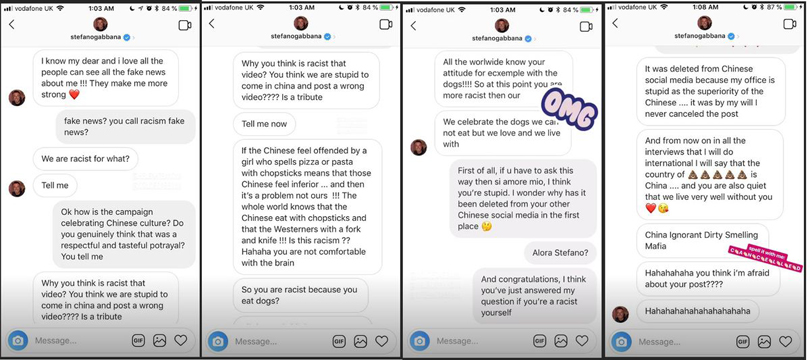
By Wednesday models slated to walk in the runway show — as well as often-contracted celebrities and influencers invited to attend—began pulling out of the show forcing the brand to cancel The Great Show, which was scheduled for later in the day in Shanghai. Dolce & Gabbana apologized and blamed Gabbana’s comments on a hack.
In a statement, the brand said: “Our dream was to bring to Shanghai a tribute event dedicated to China that tells our story and vision. It was not simply a fashion show, but something that we created especially with love and passion for China and all the people around the world who loves [sic] Dolce & Gabbana. What happened today was very unfortunate not only for us, but also for all the people who worked day and night to bring this event to life. From the bottom of our hearts, we would like to express our gratitude to our friends and guests.”
Of course, this isn’t the first public relations fiasco for Dolce & Gabbana. Here’s a brief look back at some of the Italian luxury brand’s most memorable, and offensive, actions:
2012: DOLCE & GABBANA’S PHOTO BAN ANGERS HONG KONG SHOPPERS
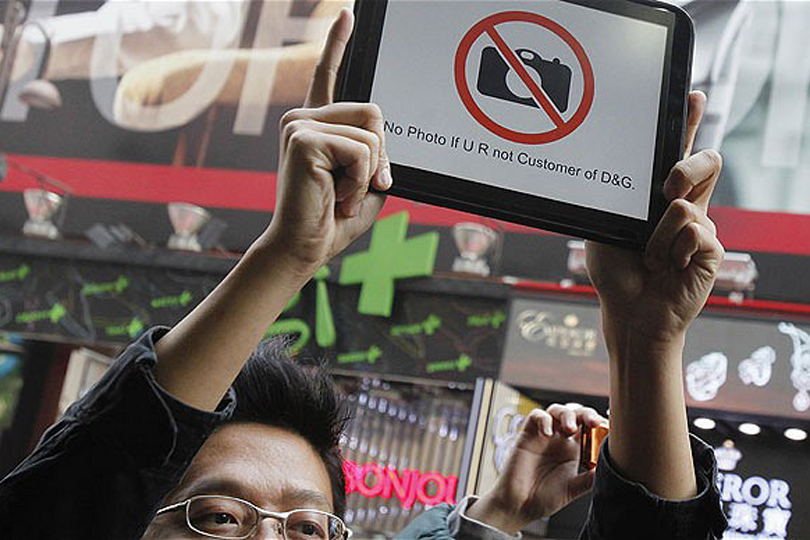
In January 2012, a security guard prevented locals from taking photographs outside of Dolce & Gabbana’s flagship store in Tsim Sha Tsui, Hong Kong. The security guard reportedly told locals that only mainland Chinese or foreign tourists were allowed to take photos outside the store, which spurred protests after the story broke on Jing Daily, the leading authority for daily news and analysis on luxury consumer trends in the Chinese market.
The protests resulted in a temporary closure of the store and the label subsequently issued an apology.
2012: DOLCE & GABBANA’S RACIST SPRING 2013 COLLECTION
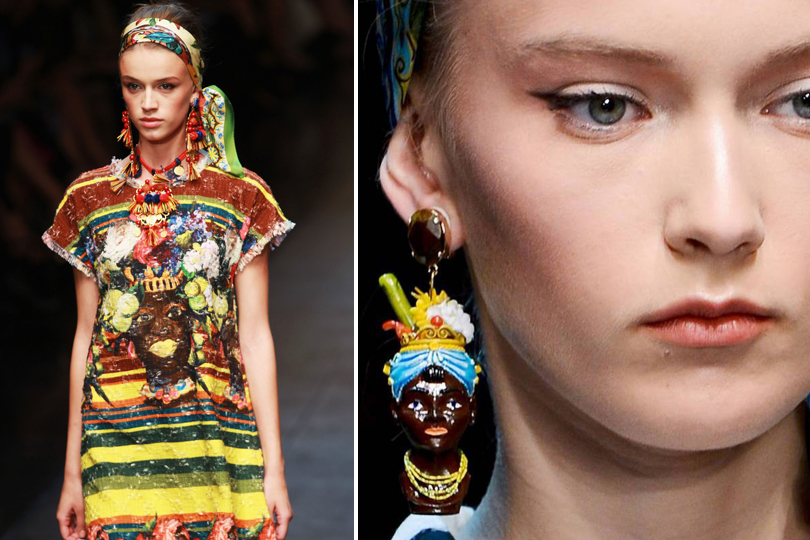
Later that same year, the brand stirred controversy when they debuted a spring 2013 collection that included Blackamoor imagery — racially insensitive, cartoonish images that are based on caricatures of black bodies. Audiences watched with raised eyebrows as white models walked the Milan runway wearing burlap-sack frocks with images of dark-skinned, slave-like African women splashed on them. The finishing touch? The models all wore ‘Mammy’ earrings.
The backlash after the show prompted the fashion house to issue an explanation on its style blog Swide.com (in the interests of transparency, I will mention that I wrote for Swide for a couple of years) on September 23. The post claimed that the designs weren’t images of colonialism and slavery, but they were based on “Moorish” figures, “a term used to define many peoples throughout history…In Sicily’s case it defines the conquerors of Sicily.” The post went on to explain that “these beautiful artifacts” are typically made out of a glazed ceramic, called Maiolica, which has deep historical meaning in Italy, and that they are in fact very common in homes, hotels, and restaurants in Sicily–a city that continues to inspire the designers. Fashion watchers were left to decide if the taboo, racially insensitive imagery included in the collection celebrated Sicily’s history or was just plain offensive.
2015: CONTROVERSIAL REMARKS ON GAY ADOPTION AND SURROGACY
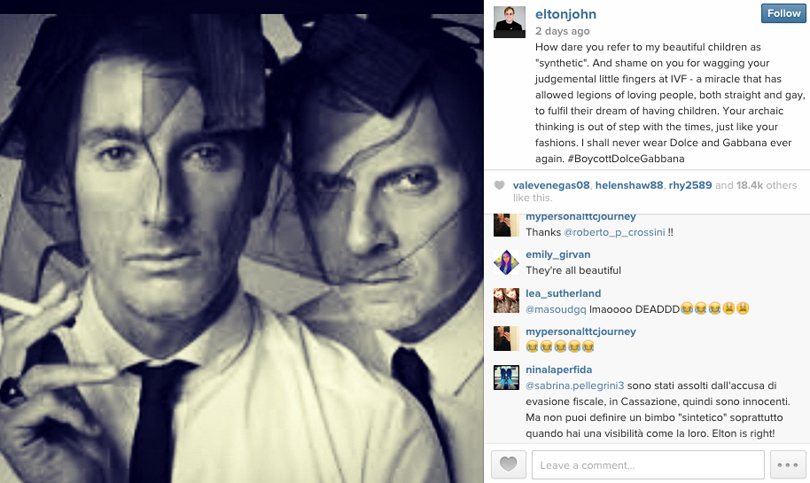
In 2015, Dolce & Gabbana came under fire once again after the design duo was interviewed by Italian magazine, Panorama. During the interview, the pair declared their opposition to gay couples adopting children or using IVF. “We oppose gay adoptions. The only family is the traditional one…. No chemical offsprings and rented uterus: life has a natural flow, there are things that should not be changed.”
Domenico Dolce, who identifies as gay, said, “I call children of chemistry synthetic children: Rented uterus, semen chosen from a catalogue. The family is not a fad. In it there is a supernatural sense of belonging.”
Celebrities, including Elton John, Madonna, Ryan Murphy, Ricky Martin, Victoria Beckham and Nicolas Ghesquière all hit social media to weigh in on the controversy in support of IVF and the hashtag #BoycottDolceGabbana was born.
How dare you refer to my beautiful children as “synthetic”. And shame on you for wagging your judgemental little fingers at IVF – a miracle that has allowed legions of loving people, both straight and gay, to fulfil their dream of having children. Your archaic thinking is out of step with the times, just like your fashions. I shall never wear Dolce and Gabbana ever again. #BoycottDolceGabbana – Elton John
The designers eventually released a statement, hoping to clarify that their remarks: “We believe firmly in democracy and we think freedom of expression is essential for that. We talked about our way of looking at the world, but it was not our intention to express a judgement on other people’s choices. We believe in freedom and love,” Stefano Gabbana said. Domenico Dolce added, “I’m Sicilian and I grew up in a traditional family made up of a mother, a father and children. I am very well aware of the fact that there are other types of families and they are as legitimate as the one I’ve known. But in my personal experience, family had a different configuration. That is the place where I learned the values of love and family. This is the reality in which I grew up, but it does not imply that I don’t understand different ones. I was talking about my personal view, without judging other people’s choices and decisions.”
The following year, the label produced an assortment of family-themed novelty tees, depicting a range of parental pairings.
2017: MELANIA TRUMP ENDORSEMENT
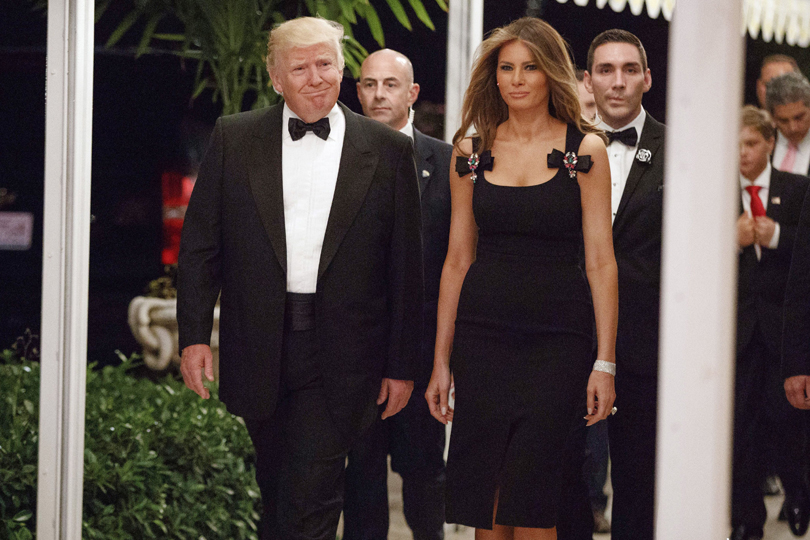
In early 2017, Stefano Gabbana once again drew criticism for the label’s impassioned support of First Lady Melania Trump, inciting a boycott among shoppers who opposed the recently elected Trump administration. In addition to continuously dressing her, Gabbana went so far as to call Melania a #DGWOMAN, which sparked outrage on social media.
When the boycotts began, the designers refused to back down. Instead the brand released a “Boycott Dolce & Gabbana” shirt mocking their latest backlash.
That same month Gabbana entered a feud with Miley Cyrus, largely because of the Melania Trump controversy and their differing political views.
2017: “DON’T CALL ME GAY PLEASE!!”
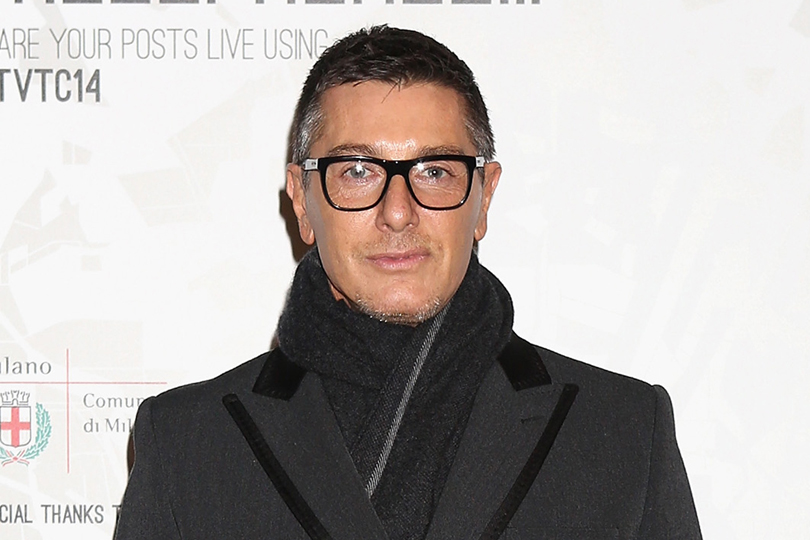
After the backlash from the design duo’s opposition to gay couples adopting children or using IVF died down, they continued to make fashion headlines for various homophobic comments. Most notably, in January 2017, in response to a social media user calling him out, Stefano Gabbana responded, “Don’t call me gay please!! I’m a man!!! Who I love is my private life!”
2017: BODY-SHAMING LADY GAGA
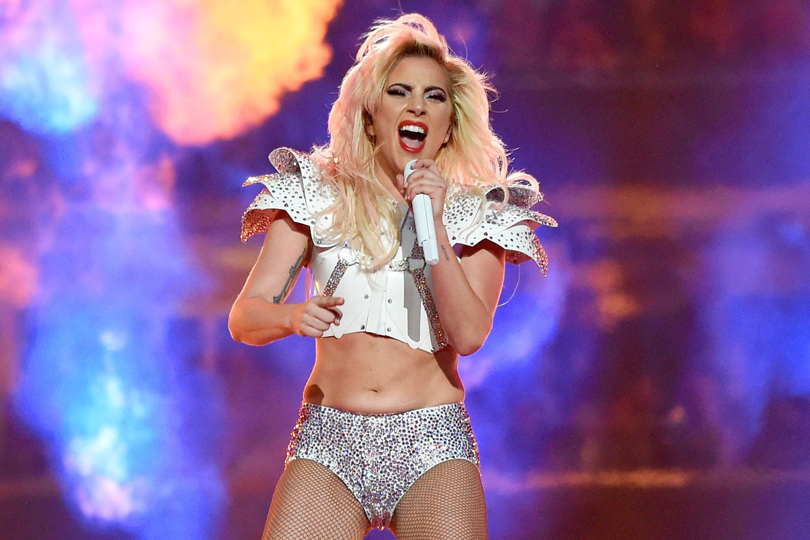
Stefano Gabbana again courted controversy when he body-shamed Lady Gaga during her epic Super Bowl LI halftime show at NRG Stadium in Houston, Texas, on February 5, 2017.
Gaga’s ‘Little Monsters’ instantly went for blood and the designer quickly apologized by posting a photo of Gaga on his Instagram account with the caption, “I know it’s strange, but finally something real not retouched! The truth, reality. Yesterday I criticized it too, but I though [sic] about it and I was wrong!!!”
2018: SELENA GOMEZ CYBER BULLYING
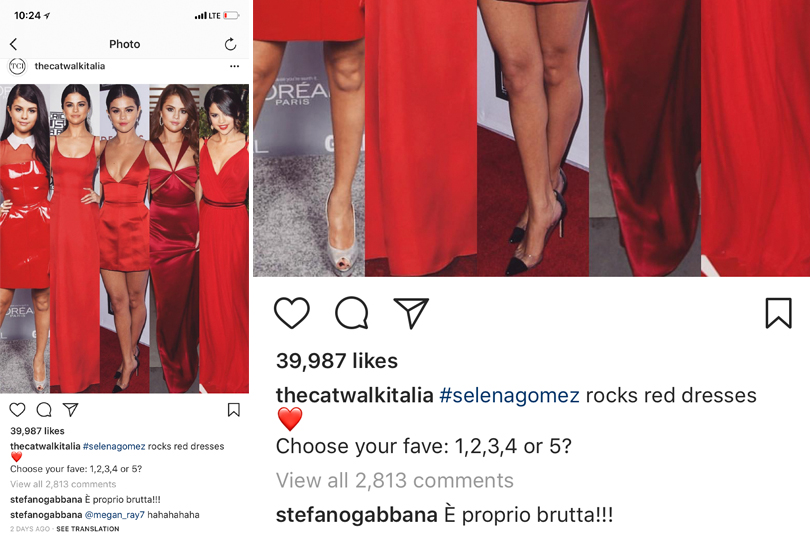
In March 2018, Stefano Gabbana took to Instagram to attack Selena Gomez commenting on one of The Catwalk Italia’s posts, “è proprio brutta!!!” which, translated from Italian, means “she’s so ugly!” At the time Selena Gomez had the largest following on Instagram, so the backlash was instant as fans attacked the outspoken designer for “cyberbullying.”
Stefano responded by posting screenshots of his comment and wrote, “MY NAME IS SELENA!!! #saysorrytome,” then added five laughing emojis.
2018: JAPANESE SUCCESSION COMMENTS
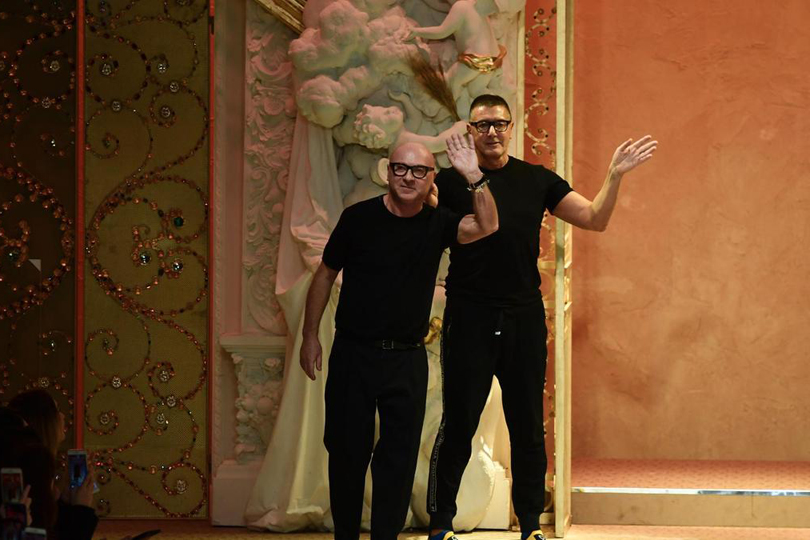
In April 2018, Stefano Gabbana spoke with Reuters about succession plans for the brand when he said: “I don’t want a Japanese designer to designer for Dolce & Gabbana.” The comment prompted accusations of racism on the part of the label. The company has yet to respond.

